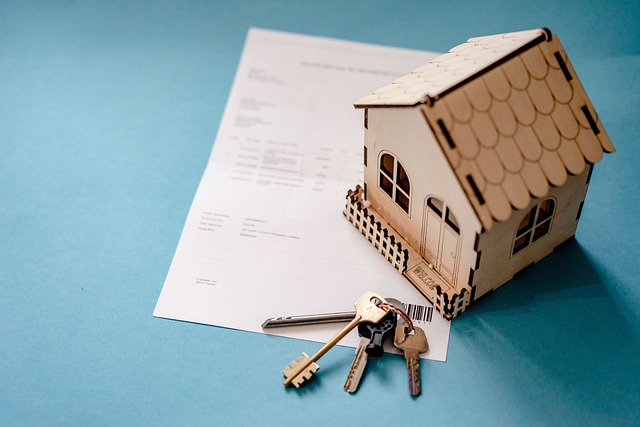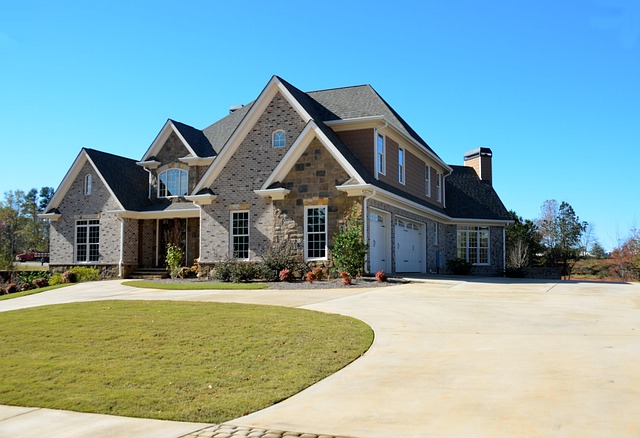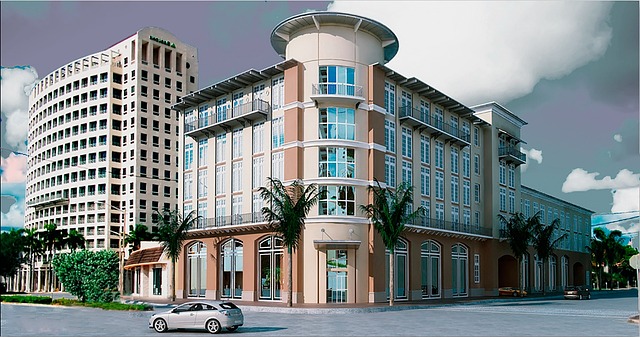Executive Condos (ECs) in Singapore transform from subsidized housing for middle-income couples into fully privatized properties after five years, which often leads to an increase in their Price per Square Foot (PSF). The PSF of ECs is influenced by a variety of factors including economic conditions, government policies like LTV ratios and TDSR, demographic shifts, and the age and location of the development. After privatization, investors typically see a rise in value, particularly in mature estates with good connectivity. The market for ECs after five years is expected to continue growing, albeit moderated by policies aimed at maintaining stability. Stakeholders should monitor economic indicators and policy adjustments to make informed decisions regarding investment in Executive Condos After 5 Years, as the market shows a stable to favorable outlook over the subsequent five-year period.
Exploring the real estate landscape of Singapore, this article delves into the intricacies of Executive Condos (ECs) and their Price per Square Foot (PSF) trends over a five-year period. From their inception to the current market dynamics, we dissect how ECs have evolved post-launch, shedding light on the pivotal factors that shape their PSF values. With historical data since their introduction, we analyze the effects of economic shifts and policy changes on EC PSFs. A case study provides insight into the performance of ECs after half a decade, while expert forecasts offer a glimpse into what investors can anticipate in the upcoming years. Join us as we navigate the nuanced world of Executive Condos PSF trends in Singapore.
- Understanding Executive Condos in Singapore: A Primer
- The Evolution of Executive Condo Market Post-Launch
- Key Factors Influencing Executive Condo PSF Trends Over Five Years
- Historical Price Trends of Executive Condos Since Introduction
- Analyzing the Impact of Economic and Policy Changes on ECS PSFs
- Case Study: Executive Condo PSF Performance After a 5-Year Mark
- Expert Predictions: What to Expect from Executive Condo PSFs in the Next Half Decade
Understanding Executive Condos in Singapore: A Primer

In Singapore, Executive Condominiums (ECs) serve as a unique housing option designed for professionals and families with diverse needs. These hybrid homes offer the benefits of both private condominium living and public housing benefits. Initially, ECs are sold at subsidized rates to provide affordability for middle-income couples. Over time, such as after five years, these properties revert to becoming private residential units. This transition is significant for investors and owners alike, as it affects the Property Services Tax (PSF) valuation and potential capital gains. Prospective buyers considering an Executive Condo as their abode or investment should understand this transformation, as it influences the long-term value and marketability of the property. Post-maturity, these ECs are comparable to private condos in terms of amenities, facilities, and prestige. It’s crucial for individuals to grasp the nuances of owning an EC, from eligibility criteria to the resale and rental market post-maturity, particularly when evaluating Executive Condo PSF trends after five years. This understanding enables informed decision-making and aligns expectations with the property’s lifecycle.
The Evolution of Executive Condo Market Post-Launch

The Executive Condo (EC) market in Singapore has undergone significant shifts since its post-launch phase, particularly with respect to pricing trends as reflected by the price per square foot (PSF). Upon the initial release of these units, they were designed to cater to the aspiring homeowners who were not eligible for public housing but earned too much to qualify for new flat purchases. Over the years, the EC market has matured, with units from earlier launches experiencing an upward trend in PSF prices. Factors such as location, amenities, and the overall condition of the property have influenced this growth. Five years post-launch, these condos often show a marked increase in value, reflecting both the appreciation of real estate within desirable neighborhoods and the changing demographics of buyers seeking larger, more luxurious living spaces. The evolution of the EC market post-launch is indicative of a dynamic and responsive property landscape, one that continues to attract investors and homeowners alike with its unique positioning between public and private housing options. As such, tracking the PSF of Executive Condos after 5 years provides valuable insights into the health and direction of the property market in Singapore.
Key Factors Influencing Executive Condo PSF Trends Over Five Years

Over the past five years, the price per square foot (PSF) for Executive Condos (ECs) in Singapore has been subject to various influencing factors. The initial period was marked by a cautious market response to the introduction of the EC scheme, which allowed eligible couples and families to purchase these flats with subsidies. As the market adapted, the PSF trends began to reflect broader economic indicators, including interest rates, inflation, and overall consumer confidence. Economic stability and growth have historically positively influenced PSF trends, with periods of economic downturn leading to a softening of prices.
In addition to macroeconomic factors, government policies play a crucial role in shaping the EC market. Policies such as loan-to-value (LTV) ratios, total debt servicing ratio (TDSR) frameworks, and additional buyer’s stamp duty (ABSD) have all impacted demand and supply dynamics within this niche segment of the housing market. The maturity of the development projects and their locations also affect PSF trends; well-located ECs with good connectivity to business districts and amenities tend to appreciate over time, particularly as they age. Additionally, demographic shifts towards smaller households in newer ECs have influenced pricing, with some units commanding higher PSF due to their desirability among younger or dual-income families. Over the five-year span, these factors have contributed to a nuanced and dynamic shift in Executive Condo PSF trends, making it essential for investors and potential buyers to consider the long-term implications of these influencers when assessing the value of ECs after five years.
Historical Price Trends of Executive Condos Since Introduction

Executive Condos (ECs) in Singapore have been a significant part of the housing market, offering an alternative to both public and private housing. Introduced to cater to the middle-income group, ECs come with a lease duration of 99 years and are situated in mature estates. Over the years since their introduction, the price trends of these condos have exhibited both stability and growth. An analysis of historical data reveals that on average, Executive Condos appreciate in value post-five years, making them an attractive investment for many. The initial years after launch typically see a steady increase in prices, reflecting the growing demand for such housing options in sought-after locations. Factors influencing these trends include government policies, market sentiment, and the overall economic climate. Notably, ECs located near LRT or MRT stations tend to perform well over time, as accessibility remains a key driver of property value appreciation. Investors and homeowners alike have observed that purchasing an Executive Condo can be a financially sound decision, with many seeing their investment grow significantly after the five-year mark, especially in areas with redevelopment potential or those that benefit from infrastructure improvements.
Analyzing the Impact of Economic and Policy Changes on ECS PSFs

The resale market for Executive Condos (ECs) in Singapore presents a dynamic landscape where the Price per Square Foot (PSF) is influenced by a multitude of economic and policy factors. Over a period of five years, the trajectory of EC PSFs can be significantly shaped by changes in interest rates, inflation, and government policies aimed at cooling or stabilizing the property market. For instance, an increase in interest rates typically leads to higher mortgage costs for buyers, which can suppress demand and cause EC PSFs to dip. Conversely, easing of monetary policy or a more accommodative stance by the authorities could stimulate investment and potentially drive up EC PSFs.
Policy measures such as the Mortgage Servicing Ratio (MSR) and Total Debt Servicing Ratio (TDSR), which regulate the amount individuals can borrow for property purchases, also play a crucial role in determining the PSF trends of ECs after five years. Shifts in these ratios or changes to loan-to-value (LTV) limits can affect buyers’ affordability and influence the pricing of resale EC units. Additionally, demographic shifts, such as the preferences of young families and upgraders, can also impact the demand for ECs, thus affecting their PSFs over time. Monitoring these economic indicators and policy adjustments is essential for investors and stakeholders to anticipate the direction of EC PSF trends within the resale market following a five-year horizon.
Case Study: Executive Condo PSF Performance After a 5-Year Mark

In the realm of property investment in Singapore, the performance of Executive Condos (ECs) after a five-year mark provides valuable insights for investors and market analysts alike. A case study examining the price per square foot (PSF) of ECs post-five years reveals a trend that is both nuanced and telling of the property market’s dynamics. Generally, ECs are designed for couples or families with at least one Singaporean citizen, offering a hybrid of benefits between public and private housing. After five years, these units often transition from being encumbered by various restrictions to becoming fully privatized properties, which can affect their market value.
The PSF performance of ECs after this period is influenced by factors such as the age of the development, its location, and broader economic conditions. Notably, the initial years post-privatization often see a steady increase in PSF, driven by a few key factors: the maturation of the area, upgrades made by owners, and the general demand for well-located residential units. This upward trajectory can be particularly evident in ECs situated within or near established estates with good connectivity to transportation hubs and amenities. Investors eyeing opportunities in the EC market should consider these long-term trends when evaluating potential investments, as the PSF after five years can serve as a reliable indicator of an EC’s future value and investment potential.
Expert Predictions: What to Expect from Executive Condo PSFs in the Next Half Decade

Over the next five years, market analysts and real estate experts predict a dynamic trajectory for Executive Condos (ECs) in Singapore, with particular attention on the Price per Square Foot (PSF) after 5 years. The prevailing economic conditions, government policies, and demographic shifts are all influential factors that will shape the future of EC PSFs. Projections suggest a steady increase in EC PSFs, buoyed by ongoing demand from young families and upgraders. This upward trend is expected to be tempered by supply management and cooling measures, which aim to maintain affordability and prevent overheating in the market.
Investors and potential homeowners looking at Executive Condos after 5 years should anticipate a nuanced appreciation of property values, influenced by macroeconomic trends and housing policies. The interplay between new launches and resale markets will also be pivotal in determining the direction of EC PSFs. While optimism is high for moderate growth, it is crucial to stay informed on policy changes that could alter this trajectory. Expert predictions indicate a stable to positive outlook, with the caveat that market conditions can shift, necessitating a watchful eye and strategic planning for those invested in or considering an investment in ECs within this period.
